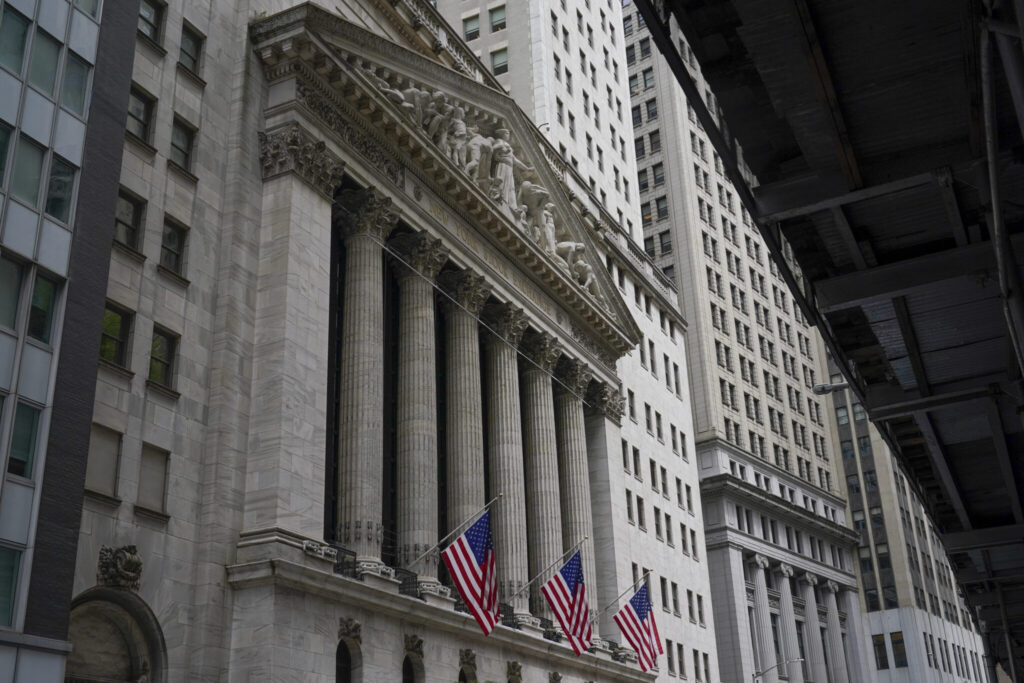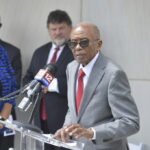First Republic Bank has folded and U.S. regulators have agreed to sell its assets to JPMorgan that was one of a number of interested buyers for First Republic, which has been on the brink of collapse since early March when Silicon Valley Bank and Signature Bank imploded. The turmoil that ensued, which also brought down Credit Suisse, severely rattled investors, but central banks and regulators around the world doubled down on their commitment to shore up the financial system. The Associated Press has the story:
Wall St. Stocks steady after latest bank failure
Newslooks- NEW YORK (AP)
The latest historic failure for the U.S. banking industry is making few waves so far, and stocks are relatively steady in early trading on Wall Street Monday.
The S&P 500 was 0.1% higher after regulators seized First Republic Bank and sold off most of it in hopes of preventing more turmoil in the industry. The Dow Jones Industrial Average was up 50 points, or 0.1% at 34,148, as of 9:40 a.m. Eastern time, while the Nasdaq composite was virtually unchanged.
First Republic has been in the spotlight for nearly two months, as investors bet on whether it would be next to topple following March’s failures of Silicon Valley Bank and Signature Bank. The worry was that runs on smaller- and mid-sized banks could take down the economy, like the financial industry’s woes during the 2008 crisis did.
But analysts and economists have said they see big differences between then and now, including how the biggest U.S. banks are feeling less pressure this time around. Plus, several of the banks that have recently been under scrutiny for weakness have said their deposit levels have shown more strength since late March.
Analysts said the difference between the stock market’s reactions to them and First Republic Bank, which plunged 75% last week, indicates investors may see it as an isolated event rather than a problem with the deeper system.
Shares of JPMorgan Chase, which is buying much of First Republic’s assets, rose 2.4%. It’s becoming even bigger following the deal.
Still, many other questions continue to hang over Wall Street that could shake things up. They include worries about corporate profits, even though companies have recently been mostly topping low expectations that have been set for them, and the U.S. government’s latest squabble over the country’s debt limit.
Above all is what the Federal Reserve will do with interest rates. At its next meeting, which concludes Wednesday, most traders expect the Fed to raise short-term rate by another quarter of a percentage point, up to a range of 5 to 5.25% from virtually zero early last year.
The hope is that may be the final increase for a while, which would give the economy and financial markets more breathing room.
The Fed has been raising rates sharply in hopes of getting high inflation under control. But high rates are a notoriously blunt tool that slow the entire economy, raise the risk of a recession and hurt prices for investments.
While the job market has remained remarkably resilient, other areas of the economy have shown weakness recently. The housing and manufacturing industries have been among the harder hit.
Reports later on Monday morning and later this week will give the latest update on the health of the manufacturing sector, U.S. services industries and hiring across the economy.
One lever that’s propped up Wall Street in recent weeks has been a stream of companies reporting better profits for the first three months of the year than expected. A weakening economy, still-high inflation and much higher interest rates have dragged down profits, but not quite as badly as analysts feared.
Through the end of last week, with just over half of S&P 500 companies reporting, nearly four in five had reported higher earnings than forecast, according to FactSet. That has companies in the index on track to report a drop of 3.7% from a year earlier.
That would mark a second straight quarter of falling earnings, something that Wall Street calls a profit recession. But it would not be as bad as the 6.7% drop that analysts forecasted a month ago.
ON Semiconductor rose 6% after reporting stronger profit and revenue for the latest quarter than expected. Norwegian Cruise Line climbed 5.2% after likewise topping expectations.
Big Tech companies have largely reported better profits than expected, which has helped stabilize the market because their size gives them outsized sway on indexes. Apple will follow with its own report this week, along with such big names as Pfizer and Ford Motor.
In the bond market, the yield on the 10-year Treasury rose to 3.47% from 3.43% late Friday. It helps set rates for mortgages and other important loans.
The yield on the two-year Treasury, which moves more on expectations for Fed action, rose to 4.10% from 4.02%.
In markets abroad, many exchanges were closed in observance of holidays.







